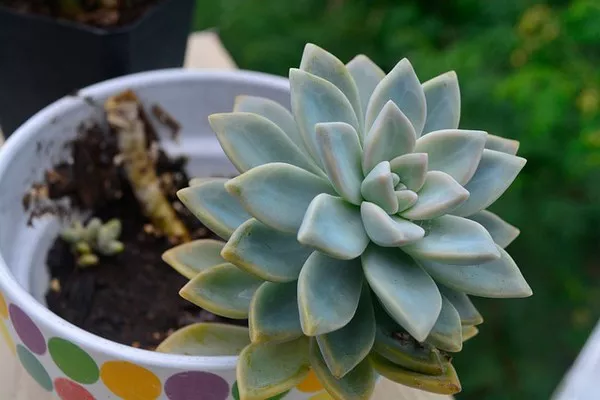In the realm of flora, succulent plants have emerged as more than just botanical wonders; they have become symbols of resilience, adaptability, and beauty. From their unique physical characteristics to their ability to thrive in harsh environments, succulents carry profound meanings that transcend their botanical classification. In this article, we delve into the symbolism and significance of succulent plants, exploring why they have captured the hearts of so many enthusiasts worldwide.
Origins and Characteristics
Succulent plants encompass a diverse array of species, each with its own distinctive features and origins. Originating primarily from arid regions such as deserts and semi-deserts, succulents have evolved mechanisms to store water in their leaves, stems, or roots, enabling them to survive in environments with scarce water resources.
One of the defining characteristics of succulents is their fleshy, thickened leaves or stems, which serve as reservoirs for water storage. This adaptation allows succulents to endure extended periods of drought by storing moisture during times of abundance and utilizing it during dry spells.
Moreover, succulents exhibit a variety of striking shapes, textures, and colors, ranging from the spiky rosettes of Agave plants to the trailing tendrils of String of Pearls. Their aesthetic appeal, combined with their resilience, has made succulents popular choices for both indoor and outdoor gardening.
Symbolism of Resilience
At the core of the symbolism associated with succulents lies the concept of resilience. These plants have mastered the art of survival in harsh and unforgiving environments, showcasing remarkable adaptability in the face of adversity. Their ability to thrive under conditions that would be inhospitable to many other plants serves as a powerful metaphor for resilience and endurance in the face of challenges.
For individuals seeking inspiration or encouragement during difficult times, succulents can serve as tangible reminders of the strength that lies within us to overcome obstacles and persevere. The sight of a thriving succulent, with its plump leaves and vibrant hues, can instill a sense of hope and optimism, reminding us that even in the most adverse circumstances, there is potential for growth and renewal.
Significance of Adaptability
In addition to resilience, succulents also symbolize adaptability and flexibility. Their ability to thrive in a wide range of environmental conditions, from scorching deserts to humid tropical climates, underscores their remarkable adaptability. This adaptability is reflected in their capacity to adjust to fluctuations in temperature, sunlight, and moisture levels, making them resilient companions for gardeners worldwide.
In a rapidly changing world where flexibility and adaptability are increasingly valued traits, succulents serve as poignant symbols of our capacity to embrace change and thrive in diverse circumstances. Just as succulents bend and flex to accommodate shifting conditions, so too can we learn to adapt and flourish amidst uncertainty and change.
Metaphor for Minimalism and Simplicity
Beyond their botanical significance, succulents have also come to represent broader philosophical concepts such as minimalism and simplicity. With their unassuming beauty and low-maintenance requirements, succulents embody the essence of simplicity in gardening.
In a culture often characterized by excess and extravagance, succulents offer a refreshing alternative—a reminder that beauty can be found in the most understated of forms. Their minimalist aesthetic and uncomplicated care regimen make them ideal companions for those seeking to cultivate a sense of tranquility and balance in their lives.
Cultural and Spiritual Associations
Throughout history, succulent plants have held cultural and spiritual significance in various societies around the world. In many indigenous cultures, succulents are revered for their medicinal properties and are used in traditional healing practices. For example, the Aloe vera plant, a well-known succulent species, has been used for centuries to treat a variety of ailments ranging from skin conditions to digestive issues.
Furthermore, succulents have been incorporated into religious rituals and ceremonies in certain cultures, where they are regarded as symbols of fertility, abundance, and protection. In Feng Shui, the practice of arranging objects to harmonize with the surrounding environment, succulents are often placed in homes and workplaces to attract positive energy and promote prosperity.
Conclusion
In conclusion, succulent plants carry rich symbolism and meaning that extends far beyond their botanical classification. From their origins in arid landscapes to their remarkable adaptations for survival, succulents serve as powerful symbols of resilience, adaptability, and beauty. Whether adorning a windowsill, gracing a garden, or serving as tokens of inspiration, succulents continue to captivate hearts and minds around the world, reminding us of the profound lessons that nature has to offer. As we cultivate these remarkable plants, we are not only tending to our gardens but nurturing our spirits and connecting with the deeper rhythms of life.


